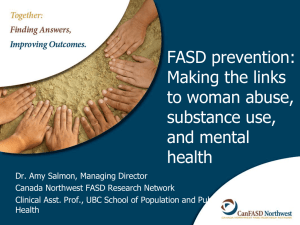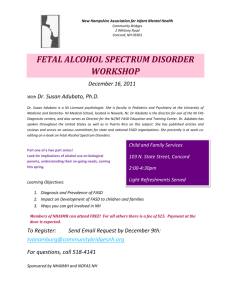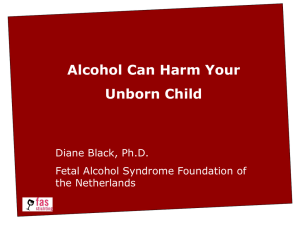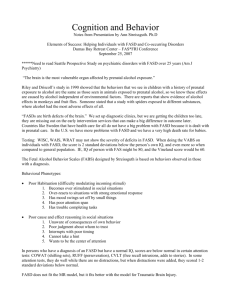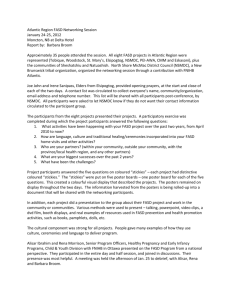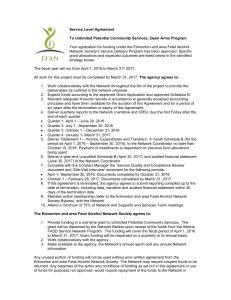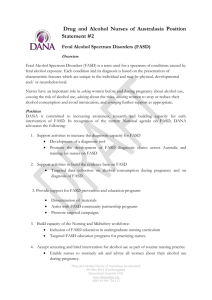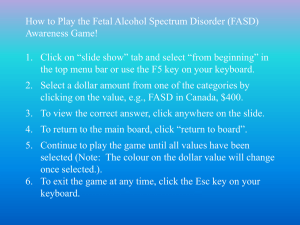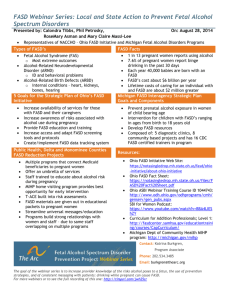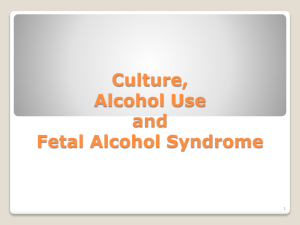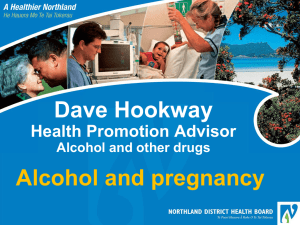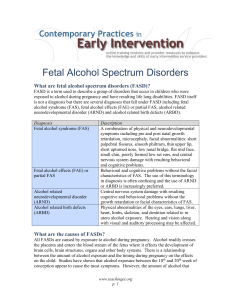Fetal Alcohol Spectrum Disorder: A Preventable Epidemic
advertisement
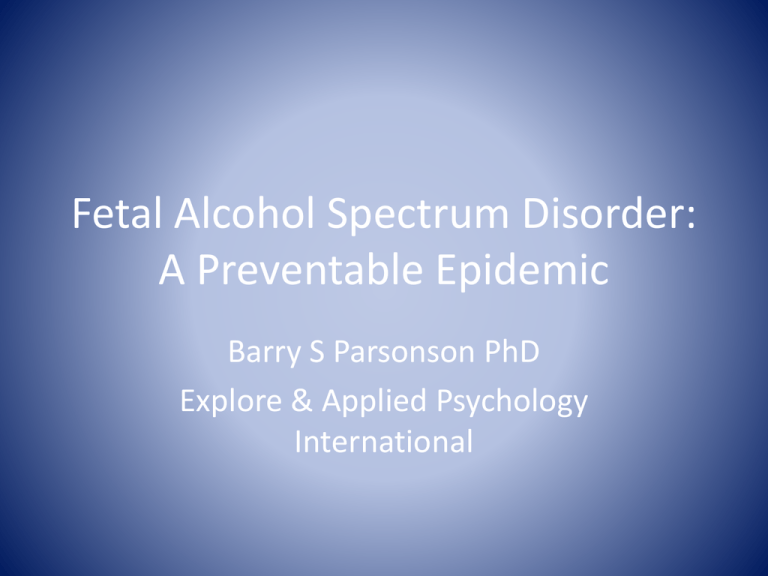
Fetal Alcohol Spectrum Disorder: A Preventable Epidemic Barry S Parsonson PhD Explore & Applied Psychology International FASD: Causes • FASD is caused by maternal consumption of alcohol during pregnancy; • Alcohol affects developing neural and physical systems differentially according to timing in relation to fetal development stage, amounts consumed and duration of exposure; • The minimum amount causing some effect is currently not known, hence advice against all alcohol consumption when pregnant; • FASD is thus entirely preventable! FASD Diagnosis • There are four internationally agreed classes of FASD based on assessment of severity using a 4-digit code relating to FAS characteristics; • FAS, PFAS, ARND, & ARBD: • In each case, confirmed evidence of maternal prenatal alcohol misuse is required; • DSM-V does not include FASD as a diagnosis although it is described and identified as a “Condition for further study”! FASD Diagnosis 1-FAS • Fetal Alcohol Syndrome (FAS) is the most severe form. It includes: • Facial Anomalies (small eye slits, thin upper lip, smooth philtrum) and Microcephaly; • Growth Deficiency (height or weight <10%ile) • CNS Damage with evidence of structural and/or functional brain abnormality; • Confirmed Prenatal Alcohol Exposure (needed if cluster of facial anomalies not present). Facial Anomalies of FAS FASD Diagnosis 2-PFAS Partial Fetal Alcohol Syndrome (PFAS) is characterised by: • Growth Deficiency (height or weight <10%ile) • CNS Damage with evidence of structural and/or functional brain abnormality; • Confirmed Prenatal Alcohol Exposure (Reliable evidence of maternal alcohol misuse). FASD Diagnosis 3- ARND Alcohol Related Neurodevelopmental Disorder (ARND) is characterised by: • CNS Damage: Evidence of structural or functional brain abnormality; • Confirmed Prenatal Alcohol Exposure (Reliable evidence of maternal alcohol misuse). FASD Diagnosis 4-ARBD Alcohol Related Birth Defects (ARBD) is classified by: • Physical Defects: Heart, Kidney or other anomalies present at Birth; • Confirmed Prenatal Alcohol Exposure: Reliable evidence of maternal Alcohol Misuse. FASD Prevalence • A Base Rate of 1% of the School Age population is estimated from a number of US, Canadian and European Studies; • Some communities have rates of up to 8.5%; • Preliminary NZ data lead to guesstimates of at least 3000 school-age children with FASD; • Accurate data are difficult to obtain and probably underestimate the true situation. • FASD is now the most common cause of ID. Post-Natal FASD Effects on Cognition & Learning • • • • • Executive functioning (Planning, attention) Memory (encoding, rote, working & spatial) Reasoning (verbal, abstract, numerical) Language (learning, comprehension, meaning) Sensorimotor (visual/motor integration, visual-spatial processing) • Attention (short span, distractible, often ADHD labelled) Distribution of IQ Scores FASD Effects on Communication & Sensory Functioning • Delayed Language Development • Impaired receptive & expressive language • Difficulties in language production & comprehension affect learning • Poor social communication affects relationship building • Hearing disorders found common in a small FAS clinic sample FASD Behavioural Effects • • • • • • • Physical Aggression Lying and Confabulation Impulsiveness and hyperactivity Cheating, stealing, bullying & animal cruelty Lack of remorse Emotional lability Substance abuse & self-harming FASD Lifespan Effects Collectively, these Cognitive, Learning, Social, Communication and Behavioural deficits have lifetime effects. Data from samples indicate: • Family life (85% of children in foster care FASD) • Educational achievement (60% excluded) • Mental Health (87% 5-13 y.o.; 23% adults suicide) • Criminality (60% of FASD teens, many Prisoners) • Relationship and Employment difficulties are common. Discussion Questions • How do we, as a profession, intervene by way of increasing awareness and promoting prevention? • Education? Who, when, how? • Increase Political and Public awareness? What strategies might work? • What about the “Binge Drinking” Culture – Does it contribute? If so, how to change that? • What can we offer to those on the FASD spectrum? In Schools, Prisons, the Community?
